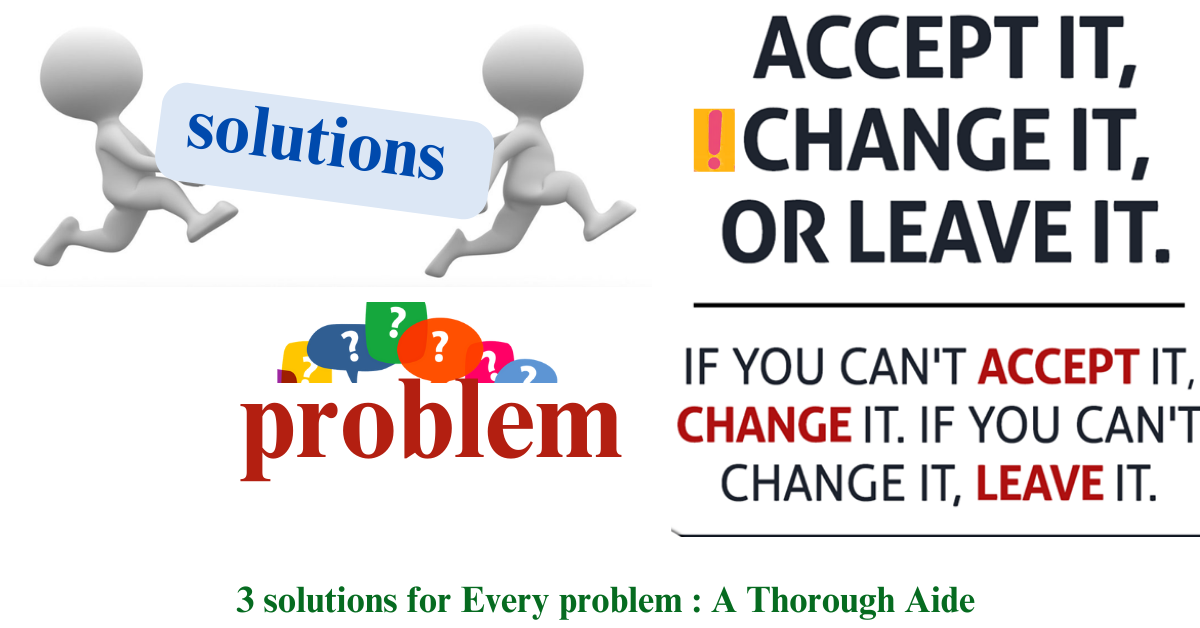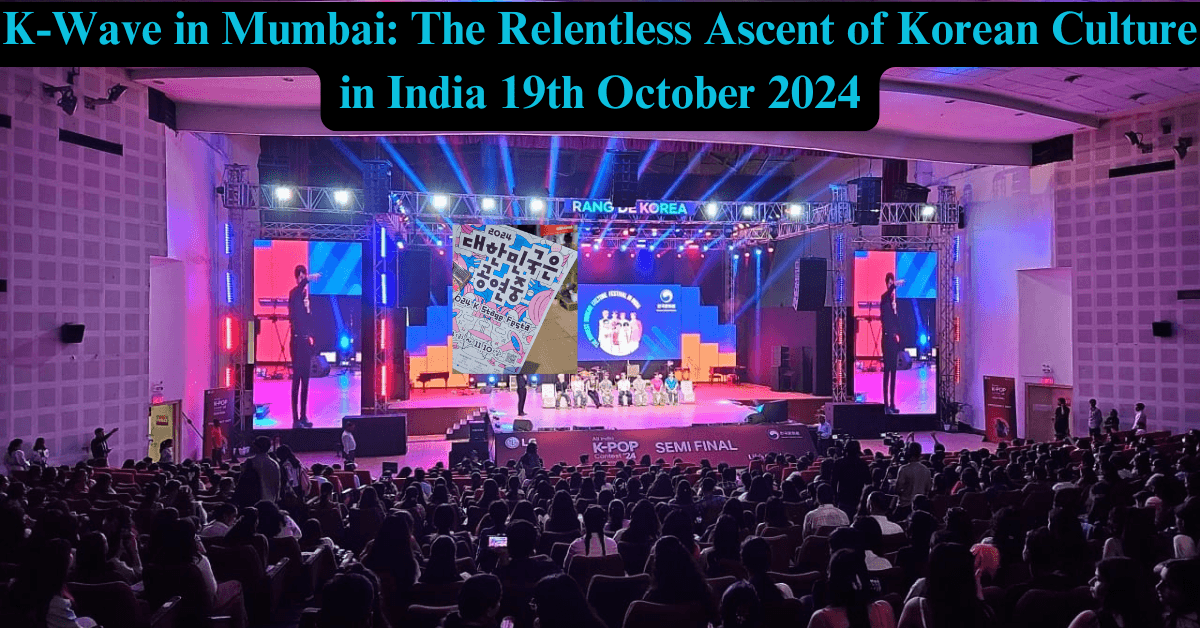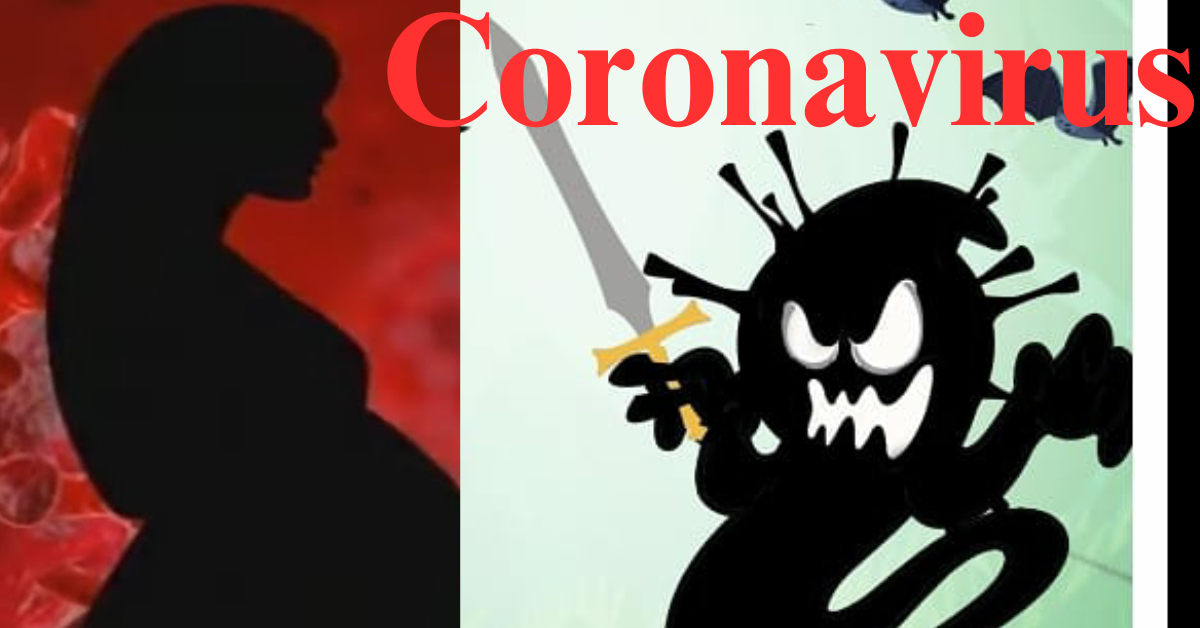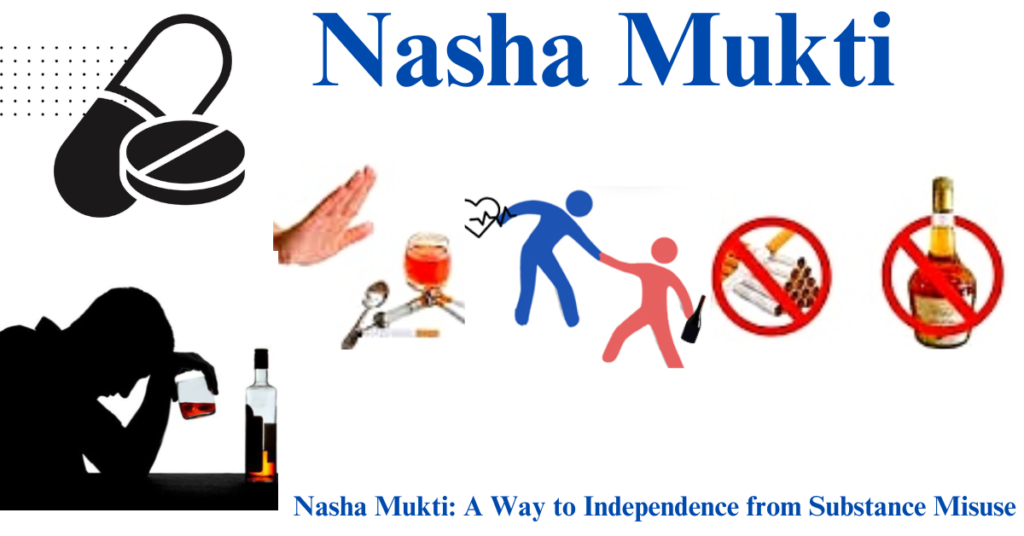
Table of Contents
Nasha Mukti: A Way to Independence from Substance Misuse
Presentation
Nasha Mukti: A Way to Independence from Substance Misuse .Nasha Mukti, meaning “independence from inebriation,” addresses the aggregate endeavors to battle substance misuse and dependence in India. With a rich social legacy that customarily advanced collectedness and all encompassing prosperity, the ascent in substance misuse has presented critical difficulties to Indian culture. Resolving this issue requires a complex methodology, joining counteraction, treatment, and recovery. This article investigates the components of Nasha Mukti, its importance, the methodologies in question, and the excursion towards a better, dependence free society.
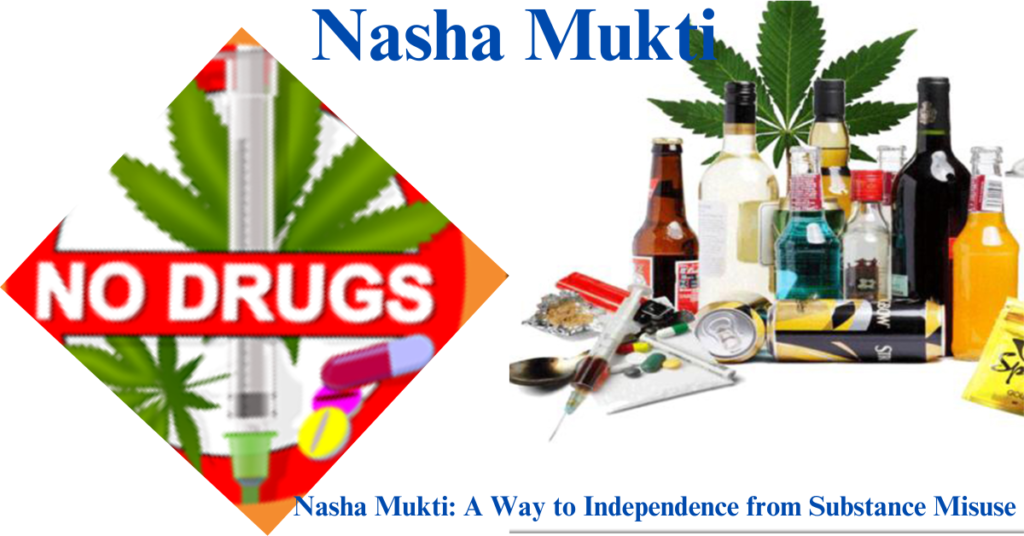
The Meaning of Nasha Mukti
Substance misuse has broad outcomes, influencing people, families, and society at large. The requirement for Nasha Mukti originates from a few basic reasons:
Wellbeing Suggestions: Substance misuse prompts extreme medical problems, including emotional well-being issues, liver illnesses, cardiovascular issues, and an expanded gamble of irresistible sicknesses. The physical and mental cost can pulverize.
Social Effect: Enslavement frequently brings about stressed connections, aggressive behavior at home, youngster disregard, and social detachment. It dissolves the social texture, prompting expanded crime percentages and local area deterioration.
Financial Weight: The monetary expense of substance misuse is significant. It incorporates medical services costs, loss of efficiency, and policing. Tending to fixation can reduce this monetary burden on people and society.
Moral and Moral Worries: Habit sabotages moral and moral qualities. It disables judgment, prompting dishonest way of behaving and crimes. Nasha Mukti looks to reestablish individual respect and cultural qualities.
Understanding Substance Maltreatment in India
India faces a developing test of substance misuse, with a different scope of substances being abused, including liquor, tobacco, pot, narcotics, and engineered drugs. The issue is unavoidable across metropolitan and country regions, influencing all age gatherings and financial layers.
Liquor: Liquor is the most usually manhandled substance in India. The simple accessibility and social acknowledgment of liquor add to its far reaching abuse. Hitting the bottle hard and constant liquor abuse are common, prompting extreme wellbeing and social outcomes.
Tobacco: Tobacco use, in both smoking and smokeless structures, is profoundly predominant in India. It is a main source of preventable infections like disease, respiratory sicknesses, and cardiovascular problems. The monetary weight of tobacco-related sicknesses is colossal.
Marijuana: Weed use is boundless, particularly among the young. The decriminalization discussion and confusions about its wellbeing have added to its expanded use. Marijuana misuse can prompt psychological well-being issues, debilitated mental capability, and compulsion.
Narcotics: The abuse of narcotics, including remedy pain relievers and heroin, has arrived at disturbing levels. Narcotic dependence prompts extreme medical issues, including glut passings, and adds to the spread of irresistible illnesses like HIV and hepatitis.
Engineered Medications: The rise of manufactured drugs, for example, methamphetamines and creator drugs, represents another test. These substances are profoundly habit-forming and frequently more risky than customary medications, prompting serious wellbeing and mental issues.
Techniques for Nasha Mukti
Tending to substance misuse requires an extensive and multi-pronged methodology. Viable Nasha Mukti systems envelop avoidance, treatment, restoration, and cultural association.
- Avoidance
Avoidance is the foundation of Nasha Mukti. It includes bringing issues to light, teaching people in general, and establishing a climate that deters substance misuse.
Instruction and Mindfulness Missions: Directing boundless instructive missions to advise the general population about the risks regarding substance misuse. Schools, universities, work environments, and public venues ought to be focused on to contact assorted crowds.
Strategy and Regulation: Carrying out and implementing severe regulations to manage the accessibility and utilization of substances. Arrangements ought to zero in on confining the offer of liquor and tobacco to minors, controlling the offer of doctor prescribed medications, and taking action against the unlawful medication exchange.
Local area Projects: Drawing in local area pioneers, strict associations, and NGOs to advance a medication free way of life. Local area based projects can offer help, direction, and elective exercises for in danger people.
Parental Contribution: Instructing guardians about the indications of substance misuse and enabling them to have open discussions with their kids. Parental direction assumes a critical part in forestalling enslavement.
- Treatment
Compelling treatment is fundamental for people battling with habit. It includes clinical, mental, and social intercessions to assist people with accomplishing moderation.
Detoxification: The most important phase in treatment is detoxification, where the body is scrubbed of the drug. Clinical oversight is much of the time important to securely oversee withdrawal side effects.
Directing and Treatment: Mental help through individual advising, bunch treatment, and conduct treatments assists people with understanding the underlying drivers of their compulsion and foster survival techniques.
Medicine Helped Treatment (MAT): For specific addictions, for example, narcotics, MAT can be compelling. Drugs like methadone or buprenorphine can assist with decreasing desires and withdrawal side effects, permitting people to zero in on recuperation.
Comprehensive Methodologies: Integrating all encompassing treatments like yoga, reflection, and care can upgrade the viability of treatment. These practices advance mental and actual prosperity and help in backslide avoidance.
- Recovery
Recovery is an essential stage in the excursion to Nasha Mukti. It centers around reintegrating people into society and supporting their drawn out recuperation.
Private Restoration Habitats: These focuses give an organized climate where people can get escalated treatment and backing. They offer a scope of administrations, including treatment, professional preparation, and fundamental abilities improvement.
Short term Projects: For the people who can’t focus on private treatment, short term programs offer adaptability. These projects permit people to get treatment while going on with their everyday obligations.
Support Gatherings: Cooperation in help gatherings, for example, AA (AA) or Opiates Unknown (NA), gives a feeling of local area and progressing support. Imparting encounters and difficulties to friends can be massively valuable.
Aftercare Administrations: Post-treatment support is crucial to forestall backslide. Aftercare administrations incorporate ordinary registrations, directing, and admittance to assets that assist people with keeping up with their balance.
- Cultural Contribution
Cultural contribution is vital for the progress of Nasha Mukti drives. It requires aggregate endeavors from different areas of society.
Government Drives: State run administrations at all levels should focus on substance misuse counteraction and treatment. This incorporates distributing assets for Nasha Mukti programs, executing viable approaches, and guaranteeing admittance to treatment offices.
Corporate Obligation: Organizations can contribute by carrying out work environment health programs, offering help for representatives battling with habit, and advancing a medication free working environment culture.
Media and Media outlet: The media assumes a strong part in molding public discernment. Capable covering substance misuse issues and depicting the outcomes of dependence in movies and TV can bring issues to light and lessen shame.
Scholastic Establishments: Schools and universities ought to integrate substance misuse training into their educational plans. They can likewise give guiding administrations and backing to understudies managing habit.
Challenges in Nasha Mukti
In spite of the deliberate endeavors towards Nasha Mukti, a few difficulties impede progress. Tending to these difficulties is critical for the progress of against compulsion drives.
Disgrace and Separation: Shame related with fixation frequently keeps people from looking for help. Society’s critical disposition and victimization fiends can intensify the issue.
Restricted Admittance to Treatment: Numerous districts in India need satisfactory treatment offices. Admittance to quality consideration is many times restricted by geological, monetary, and infrastructural imperatives.
Backslide Rates: Backslide is a typical test in compulsion recuperation. Supporting long haul balance needs persistent help and follow-up care, which is frequently deficient.
Youth Weakness: The young are especially powerless against substance misuse. Peer pressure, scholarly pressure, and the craving to explore make them vulnerable to compulsion. Compelling avoidance and mediation procedures are expected to address this segment.
Unlawful Medication Exchange: The unlawful medication exchange represents a huge test. Controling the stockpile of medications requires hearty policing global participation.
Examples of overcoming adversity and Advancements
Notwithstanding the difficulties, there have been remarkable examples of overcoming adversity and imaginative methodologies in the domain of Nasha Mukti.
De-Enslavement Focuses: Fruitful de-compulsion focuses across India have changed lives. These focuses offer complete treatment programs and have assisted numerous people with accomplishing enduring collectedness.
Advanced Mediations: The utilization of computerized stages and versatile applications for directing, support gatherings, and backslide anticipation has shown guarantee. Telemedicine has made treatment more open, particularly in distant regions.
Local area Drove Drives: Grassroots drives drove by local area individuals have exhibited the force of nearby association. These drives frequently have a superior comprehension of the local area’s necessities and can give custom fitted arrangements.
Conclusion
Nasha Mukti is a essential mission that requires a collective and sustained effort from individuals, families, communities, and the government. The path to freedom from substance abuse is challenging, but with comprehensive strategies encompassing prevention, treatment, rehabilitation, and societal involvement, it is achievable. By addressing the root causes, providing support, and fostering a culture of sobriety, India can pave the way towards a healthier, addiction-free society. The journey of Nasha Mukti is not just about overcoming addiction; it is about reclaiming lives, restoring dignity, and building a brighter future for all l[ke family ,peoples ,socities and country also.

